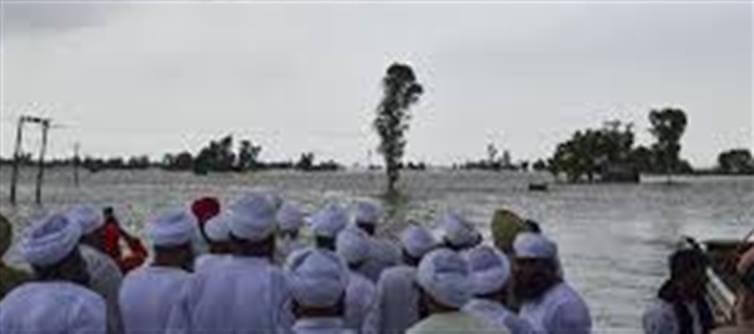
Torrential monsoon rains have unleashed unprecedented flooding in Pakistan’s punjab and khyber pakhtunkhwa provinces, with impacts now rippling across northern India. Here’s a detailed breakdown of the ongoing crisis.
1. punjab Grapples with Historic Floods
- Punjab has borne the brunt of the monsoon deluge, with 10 deaths reported in the last 24 hours.
- Information minister Azma Bokhari called it “one of the most severe floods in Punjab’s history.”
- Over 2 million people have been affected, with rescue teams evacuating 7.6 lakh individuals and over 5 lakh livestock stranded by floodwaters.
2. Heavy Rainfall Across Key Districts
- Several districts, including Lahore, Hafizabad, and Multan, recorded over 60 mm of rainfall within 24 hours.
- At least four locations crossed the 120 mm mark, overwhelming local drainage and river systems.
- Authorities warn that further surges from India’s sutlej river could exacerbate flooding in Punjab’s low-lying regions.
3. khyber pakhtunkhwa Faces Rising Death Toll
- In khyber pakhtunkhwa, 5 people died in rain-related incidents over the past day, including four children and a woman.
- The province has recorded 406 of its 484 monsoon-related deaths since late june, highlighting the severity of this season.
- Peshawar alone received 41 mm of rainfall in 24 hours, with many low-lying neighborhoods submerged.
4. National Casualty Figures Soar
- According to the National Disaster Management Authority (NDMA), from june 26 to august 31:
- 854 deaths due to monsoon floods and rain-related incidents.
- 1,130 injuries, including 130 children and 227 women.
- Breakdown by region:
- Khyber Pakhtunkhwa: 484 deaths
- Punjab: 209 deaths
- Sindh: 58 deaths
- Baluchistan: 25 deaths
- Pakistan-occupied Kashmir: 70 deaths
- Islamabad capital Territory: 8 deaths
5. government Response: Rescue and Relief Operations
- Federal Climate Change minister Dr Musadik Malik confirmed 2 million people have been rescued, but 8 million remain displaced.
- Priority actions include providing potable water, medicines, tents, mosquito nets, and food to affected populations.
- Authorities are also focusing on preventing waterborne diseases among flood-affected communities.
6. Fresh Flood Threats Loom
- Punjab officials warned that fresh torrents from the Sutlej river have already breached embankments in multiple districts.
- Another surge is expected to reach Head Marala within two days, potentially worsening flooding.
- Local authorities have urged vigilance in catchment areas and riverbanks, particularly in low-lying settlements.
7. Alerts Issued for North indian Cities
- The India Meteorological Department (IMD) has issued warnings as rains continue to lash northern India:
- Chandigarh: Orange alert for heavy rainfall.
- Patiala & Ludhiana: red alert for intense showers.
- Residents in flood-prone areas have been urged to stay alert and avoid traveling near swollen rivers or drainage channels.
8. How Citizens Can Stay Safe
- Avoid unnecessary travel during heavy rainfall alerts.
- Keep emergency kits ready, including drinking water, food, medicines, and important documents.
- Stay updated via official alerts from IMD, local authorities, and news channels.
- Move to higher ground if living in flood-prone zones and avoid walking through flowing water.
9. Regional Impacts Beyond Punjab
- Neighboring regions such as Chandigarh and Haryana are experiencing heavy rains and are on alert.
- Flood management teams are working to reinforce embankments, divert water, and evacuate vulnerable populations.
- Continuous monitoring of river levels and weather forecasts is crucial for preventing further disasters.
10. The Bigger Picture: Climate and Monsoon Trends
- The unprecedented flooding highlights intense monsoon patterns and climate vulnerabilities in the region.
- Experts warn that rapid urbanization and deforestation exacerbate flood risks in northern india and Pakistan.
- Long-term mitigation measures include better urban drainage, embankment strengthening, and flood-resilient infrastructure.
.jpg)




 click and follow Indiaherald WhatsApp channel
click and follow Indiaherald WhatsApp channel